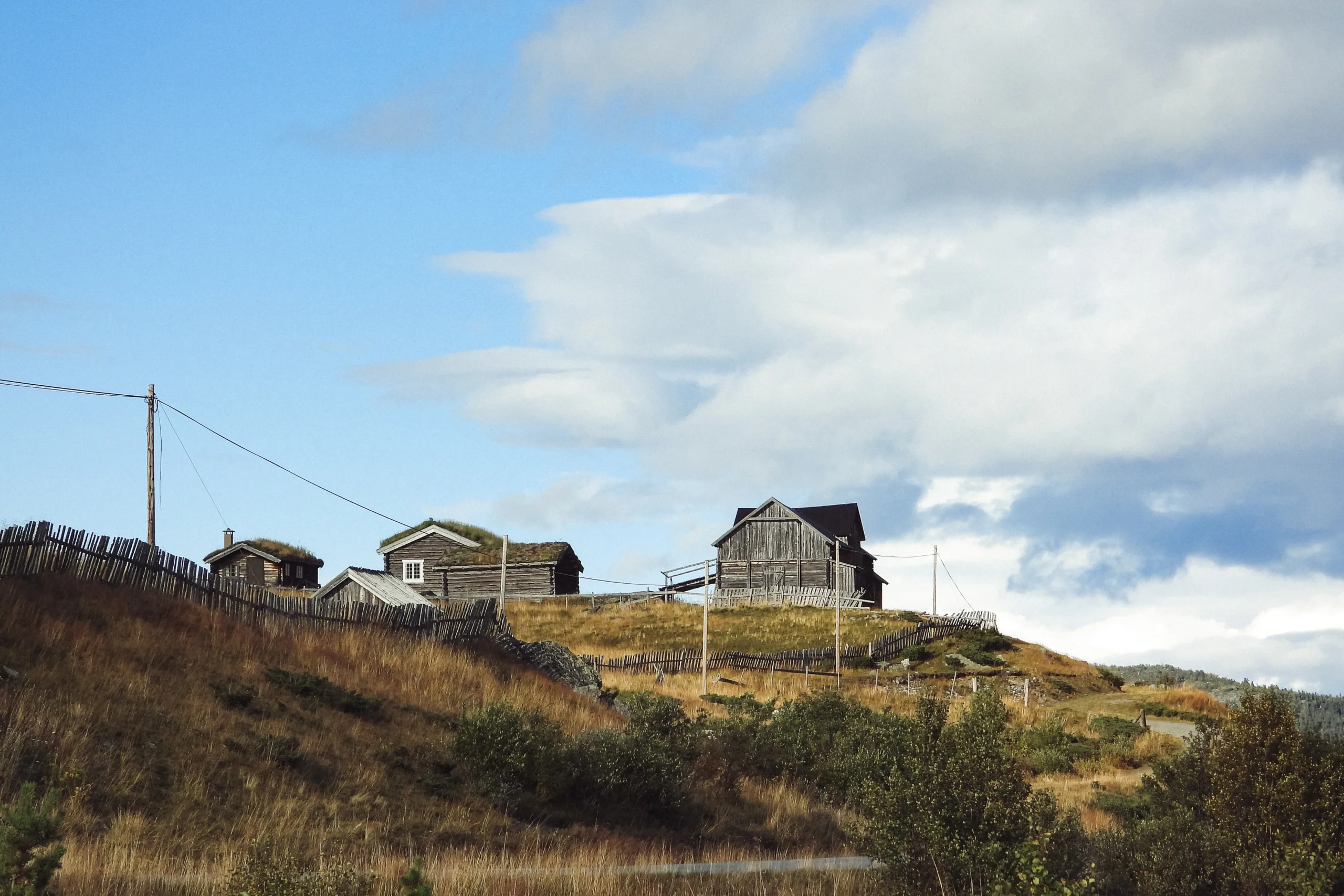Did you know that trees can take anywhere from 25-100 years to mature and be ready for lumber? If you’re looking to harvest wood from trees, it’s important to understand how long you need to wait before your trees are ready for timber. In this article, we’ll discuss the different factors that come into play when trying to decide how long it takes for trees to grow for lumber, including species and climate. We’ll also talk about ways you can speed up the process of growing your own lumber. Whether you’re a homeowner looking to build a deck or a professional forester looking for timber for sale, this article will provide valuable insight into the timing of growing your own lumber.
The growth of trees for lumber is affected by a variety of factors, including climate, soil type, water availability, and competition from other trees. Climate is one of the most important determinants of tree growth for lumber, as different tree species require specific temperature ranges and levels of precipitation to reach their full potential. Soil type also plays an important role, as certain soil types are better suited to support particular tree species. Additionally, water availability can be a significant factor in tree growth; if there is insufficient water due to drought or over-irrigation, the trees will not be able to absorb the necessary nutrients for optimal growth. Finally, competition from other trees can limit the available resources and prevent one or more trees from reaching their full growth potential.
Identifying Ideal Trees for Lumber
Lumber is a vital component of many construction and manufacturing projects. In order to produce high quality lumber, it is important to select the ideal tree species. The process of identifying an ideal tree for lumber begins by assessing the characteristics of the tree. Factors such as size, shape, and density are all important characteristics that must be taken into consideration when selecting the right species.
Once the characteristics of the tree have been assessed, it is important to consider its growth habit. Trees with straight trunks are ideal for producing quality lumber since they are easier to cut into boards or other shapes. It is also important to take into account how the tree grows in different climates and soil types as this can affect its stability and strength.
Another factor that must be considered when selecting trees for lumber is their maturity level. Trees that are mature will produce higher quality lumber than those that are younger because they have had more time to develop strong fibers and denser wood. It is also essential to identify any potential defects in the tree such as rot or fungi which can lower its overall quality and strength.
Finally, it is important to consider the type of wood produced by each species when selecting trees for lumber production. Some species produce harder woods while others are softer, so it’s essential to choose one that meets the specific needs of your project. It’s also important to consider if a particular species produces sapwood or heartwood as this can affect its overall durability and strength when used in construction applications.
By taking all these factors into consideration, it is possible to select an ideal tree species for producing high quality lumber for any project. With careful assessment and research, you can ensure that you get the best results from your chosen species.
Planting Trees Intended for Lumber
The first step in planting trees intended for lumber is to select the right species. Different species of trees grow differently and have different levels of strength and density. Depending on what type of lumber you are looking to produce, you may need to select a specific species of tree. It’s important to research the best type of tree for your purpose, as some trees take longer to mature than others, or may require different soil conditions. Once you have selected the right species, it’s time to prepare the soil where the trees will be planted.
Preparing the Soil
Before planting, it’s important to ensure that the soil is suitable for the type of tree being planted. Soil should be tested for pH and nutrient levels, as well as checked for compaction and drainage. If necessary, amendments can be added in order to improve the soil conditions before planting. Additionally, it’s important to clear away any debris or weeds from the area and dig a hole that is twice as wide as the root ball of the tree seedling being planted.
Care After Planting
Once a tree has been planted, it’s important to provide proper care in order to ensure its health and growth. Newly planted trees should be watered regularly during their first few years while they are establishing their root systems. During hot weather or periods of drought, supplemental irrigation may be necessary in order to keep them adequately hydrated. Additionally, young trees should be pruned regularly in order to control their shape and size while they are still young and developing. Finally, mulch should be applied around newly planted trees in order to protect their roots from extreme temperatures and aid with moisture retention during dry periods.
By following these steps when planting and caring for trees intended for lumber production, you can ensure that your investment will pay off with strong healthy timber in future years.
Different Types of Trees Used in Lumber Production
Lumber production involves the harvesting of trees for use in a variety of products, from paper to furniture. Different types of trees are used for different purposes, depending on their properties and availability. Some of the most common types of trees used in lumber production include pine, spruce, fir, and cedar.
Pine is a softwood that is widely used in the construction industry because of its strength and durability. It is also often used for furniture making due to its attractive grain pattern. Pine is usually light in color, ranging from white to yellowish-brown.
Spruce is another type of softwood that is commonly used for construction and furniture making. It has a very straight grain pattern and can be found in light yellow or reddish-brown shades. It has a high resistance to decay and can be stained or painted easily.
Fir is a type of softwood that is commonly used for construction purposes as well as furniture making due to its strength and durability. It has a distinctive grain pattern that makes it visually appealing for both indoor and outdoor applications. Fir can be found in shades ranging from light brown to dark red-brown.
Cedar is a type of hardwood that is widely used in the lumber industry due to its strength, durability, and resistance to decay. It has an attractive grain pattern with shades ranging from light yellow to reddish-brown. Cedar is often used for outdoor structures such as decks, fences, siding, and outdoor furniture due to its resistance to rot and insect infestations.
These are just some of the most common types of trees used in lumber production today. Each tree species has unique characteristics that make it suitable for different applications, so it’s important to understand what kind of tree will best suit your needs before you buy lumber or build something with wood.
The Benefits of Fast-Growing Tree Species for Lumber Production
The use of fast-growing tree species for lumber production has many advantages. These species are often more sustainable and can be harvested for lumber more quickly than traditional slow-growing species. This means that more lumber can be produced in a shorter amount of time, which can have both economic and environmental benefits. Fast-growing tree species can also be used to replace slower growing species that have been depleted due to overharvesting or deforestation.
The use of fast-growing tree species may also result in a higher quality of lumber. Faster growing trees tend to have straighter grain, making them more suitable for certain types of lumber products such as flooring, furniture, and cabinetry. They are also less prone to warping and splitting, which makes them a better choice for outdoor applications such as decks and fences.
Fast-growing tree species may also require less maintenance than slower growing varieties. When trees are grown quickly they are often stronger and healthier due to the increased nutrient uptake from the soil and the lack of competition from other plants or animals. This means that they may require less pruning or fertilization than slower growing varieties, which can save both time and money for lumber producers.
The use of fast-growing tree species for lumber production can have many benefits for both the environment and the economy. By utilizing these trees, producers can produce more wood in a shorter amount of time while still maintaining high quality standards. Additionally, these trees require less maintenance than their slower growing counterparts, resulting in cost savings for producers as well as reducing their environmental impact.

How Long Does It Take For a Tree To Grow For Lumber?
The length of time it takes for a tree to grow to full maturity and be ready for lumber depends on the species of tree and its specific growing conditions. Generally, trees take between 20 and 80 years to reach full maturity. Pine trees, for example, may take around 15-20 years before they are ready for harvesting. Oak trees can take up to 80 years before they are ready for lumber production.
In addition to the age of the tree, other factors such as climate and soil fertility also affect how quickly a tree grows and matures. Trees in warm climates tend to grow faster than those in cooler climates because they have a longer growing season. Trees in fertile soils also tend to grow faster because they have access to more nutrients.
The amount of sunlight that a particular tree receives can also play a role in its growth rate. Trees that receive more sunlight tend to grow faster than those that receive less sunlight due to increased photosynthesis rates.
Finally, the type of wood that is desired from the tree will affect how long it takes for it to reach maturity. Hardwoods may take longer than softwoods since hardwood trees usually have slower growth rates than softwood trees.
In short, it typically takes between 20 and 80 years for a tree to reach full maturity and be ready for lumber production depending on its species, climate, soil fertility, amount of sunlight received, and type of wood desired from the tree.
The Importance of Sustainable Forestry Practices For Growing Trees For Lumber
Sustainable forestry practices are essential for growing trees for lumber in a responsible and efficient way. It is important to ensure that the environment is not damaged by unsustainable practices and that the tree population is maintained and healthy. Sustainable forestry practices involve taking into account the natural resources of the area, such as water, soil, climate, topography, species diversity and wildlife habitat. These resources must be managed carefully to ensure that they continue to be available for future generations.
In addition, sustainable forestry practices involve managing forests in a way that promotes healthy ecosystems. This includes protecting sensitive areas from over-harvesting or development, maintaining tree diversity and ensuring proper forest regeneration. By following sustainable forestry practices, a region can maintain its natural resources while still providing products such as lumber.
Sustainable forestry practices also help protect the environment from the effects of deforestation. Deforestation can lead to soil erosion, loss of biodiversity, air pollution and climate change. By using sustainable forestry practices, such as selective harvesting and replanting efforts, it is possible to reduce these negative environmental impacts while still providing wood products for construction purposes.
Finally, sustainable forestry practices are important for protecting local wildlife habitats from destruction or fragmentation due to logging activities. Not only does this help protect species diversity but it also helps maintain water quality by preventing sedimentation from runoff into waterways. Furthermore, when done correctly it can even provide jobs for local people who are employed in logging activities or other related industries.
Overall, sustainable forestry practices are essential for growing trees for lumber in an environmentally friendly manner that also takes into account economic factors such as job creation and resource management. By following these principles we can ensure that we have a healthy and prosperous future while still providing wood products necessary for our everyday lives.
Advantages of Planting Trees For Lumber
Planting trees for lumber offers many advantages. Foremost among these is the obvious one: trees provide a renewable source of lumber, which can be used to create a wide variety of products. This can be especially beneficial in areas where natural forests are lacking or have been depleted due to over-harvesting. Additionally, planting trees for lumber provides an economic boost to communities, as it creates jobs and revenue for local businesses. Furthermore, planting trees for lumber helps to reduce carbon emissions, as the trees act as carbon sinks and are able to capture and store carbon dioxide from the atmosphere. Finally, planting trees for lumber helps to protect wildlife habitats by providing habitat for many species of birds and animals, as well as providing food sources in the form of nuts and fruits.
Disadvantages of Planting Trees For Lumber
While there are many advantages associated with planting trees for lumber, it is important to consider some potential drawbacks. One major disadvantage is that it can take decades before a tree is mature enough to harvest the lumber from it. Additionally, the process of harvesting the wood can be destructive to ecosystems if not done properly. If not managed responsibly or sustainably, forests may be damaged or destroyed in order to acquire the desired amount of wood. Furthermore, replanting efforts may not keep up with harvesting rates if done improperly or without proper oversight. Finally, harvesting trees for lumber may also cause disruption in animal habitats if large amounts of land are cleared at once.

Conclusion
Growing trees for lumber is an important part of the forestry industry. It takes a great deal of time, effort, and resources to properly cultivate and harvest trees for lumber production. On average, it takes over a decade for a tree to grow large enough to be harvested for lumber. This time frame can vary depending on the type of tree being grown, as well as the climate and soil conditions in which it is grown. Additionally, careful management of forests is essential in order to ensure sustainable forestry practices that will ensure a healthy supply of trees into the future.
Overall, growing trees for lumber is an important part of our economy and environment. It requires considerable time and resources, but when done correctly can provide not only lumber but also habitat for wildlife and recreational spaces. With proper management, we can ensure that our forests remain healthy into the future.

My interest in trees started when I first saw the giant sequoias in Yosemite.
I was a teenager then, and I remember thinking, “I need to learn more about this.”
That moment stuck with me.
A few years later, I went on to study forestry at Michigan Tech.
Since graduating, I’ve worked in a mix of hands-on tree care and community education.
I’ve spent over ten years helping people understand how to plant, maintain, and protect the trees in their neighborhoods.
I don’t see trees as just part of the landscape.
They are living things that make a real difference in our daily lives.
